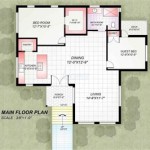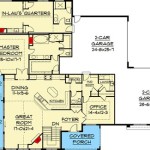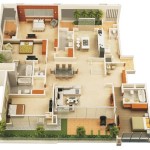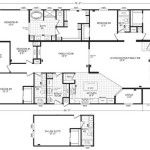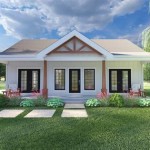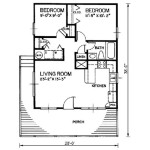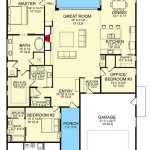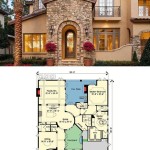Large Family House Floor Plans: Designing for Space and Functionality
Designing a house for a large family presents unique challenges and opportunities. The floor plan must accommodate a multitude of needs, balancing individual privacy with communal spaces that foster connection. Creating a functional and comfortable home environment requires careful consideration of spatial arrangement, storage solutions, and traffic flow. This article explores key aspects of designing effective floor plans for large families, focusing on common features and strategies for maximizing both space and usability.
Prioritizing Common Areas for Family Interaction
The heart of a large family home often lies in its common areas. These spaces, designed for shared activities and relaxation, play a vital role in fostering family cohesion and creating opportunities for interaction. A well-designed floor plan will strategically position and size these areas to comfortably accommodate the family's needs.
Open-concept living spaces, which combine the kitchen, dining area, and living room into a single, expansive zone, are a popular choice for large families. This layout promotes inclusivity, allowing family members to interact while engaged in different activities. For instance, parents can supervise children playing in the living room while preparing meals in the kitchen. The open flow also provides flexibility for entertaining guests.
Conversely, a separate family room or den can offer a more intimate and relaxed space for smaller group activities. This area can be dedicated to movie nights, game playing, or quiet reading. A well-placed family room can act as a buffer between the busier common areas and the more private bedrooms, providing a haven for those seeking peace and quiet.
The dining area, whether integrated into an open-concept space or a separate room, should be large enough to comfortably seat the entire family. Consider incorporating a large dining table or a flexible arrangement that can be expanded for special occasions. Ample storage within or near the dining area, such as a buffet or pantry, is essential for storing dishes, linens, and other dining essentials.
Outdoor living spaces, such as patios, decks, or porches, can extend the common areas of the home and provide additional space for relaxation and recreation. These areas can be designed to complement the interior spaces, creating a seamless transition between indoors and outdoors. Incorporating features such as outdoor kitchens, seating areas, and play areas can enhance the functionality and enjoyment of these spaces.
Strategically Planning Private Spaces for Individuals
While common areas are essential for family interaction, private spaces are equally important for individual well-being. A well-designed floor plan will provide each family member with a personal sanctuary where they can retreat for rest, study, or personal pursuits. The number, size, and configuration of bedrooms and bathrooms will depend on the size and composition of the family.
Adequate bedroom space is crucial for ensuring each family member has a comfortable and functional living area. Consider the age and needs of each child when determining bedroom size and layout. Larger bedrooms may be necessary for older children or teenagers who require more space for studying and personal belongings. Built-in storage solutions, such as closets, shelves, and drawers, can help maximize space and minimize clutter.
The location of bedrooms within the floor plan can also impact privacy and comfort. Separating the master suite from the children's bedrooms can provide parents with a greater sense of privacy. Zoning bedrooms by age group can also be beneficial, creating distinct areas for younger children and teenagers.
Sufficient bathroom facilities are essential for a large family. Multiple bathrooms can significantly reduce morning congestion and improve overall household efficiency. Consider incorporating a master bathroom for the parents, a shared bathroom for the children, and a powder room for guests. Features such as double sinks, separate toilet compartments, and ample storage can enhance the functionality of bathrooms. The use of water-efficient fixtures can also help conserve resources and reduce utility bills.
In addition to bedrooms and bathrooms, consider incorporating other private spaces, such as a home office, a study area, or a craft room. These spaces can provide family members with dedicated areas for work, hobbies, and creative pursuits. The design of these spaces should be tailored to the specific needs of the individual using them.
Optimizing Storage and Organization Throughout the House
Sufficient storage is a critical consideration in any large family home. Clutter can quickly accumulate, leading to a feeling of disorganization and stress. A well-designed floor plan will incorporate ample storage solutions throughout the house, maximizing space and promoting a sense of order.
The kitchen is often the focal point for storage needs. A well-designed kitchen will incorporate ample cabinet space, pantry storage, and counter space. Consider incorporating features such as pull-out shelves, drawer dividers, and vertical storage solutions to maximize efficiency. A walk-in pantry can provide additional storage space for food and kitchen appliances.
Bathrooms also require ample storage for toiletries, linens, and cleaning supplies. Consider incorporating features such as vanity cabinets, linen closets, and built-in shelves. Maximizing vertical space can help create additional storage opportunities.
Entryways and mudrooms are often overlooked when planning storage, but they are essential for managing clutter and keeping the house organized. Consider incorporating features such as coat racks, shoe storage, and benches with storage compartments. A well-designed mudroom can help prevent dirt and debris from being tracked into the house.
Throughout the house, consider incorporating built-in storage solutions, such as bookshelves, window seats with storage compartments, and under-stair storage. These features can add functionality and character to the home while maximizing space. Unused spaces, such as attics and basements, can be converted into storage areas to further alleviate clutter.
Effective organization systems are just as important as ample storage. Encourage family members to take responsibility for their belongings by providing them with designated storage spaces and teaching them how to maintain a tidy environment. Regular decluttering and purging of unwanted items can also help prevent clutter from accumulating.
Considering Traffic Flow and Accessibility
Traffic flow and accessibility are critical considerations in any house design, but they are particularly important in large family homes where multiple people are moving around at the same time. A well-designed floor plan will promote smooth and efficient movement throughout the house, minimizing congestion and maximizing usability.
Wide hallways and doorways can accommodate multiple people walking side-by-side and make it easier to move furniture and other large items. Avoid creating narrow hallways or bottlenecks that can restrict movement. Consider the placement of doorways and hallways to minimize disruptions to private spaces.
The placement of key rooms, such as the kitchen, bathrooms, and bedrooms, can also impact traffic flow. Locate these rooms in areas that are easily accessible from other parts of the house. Avoid placing bedrooms directly off of main hallways or living areas, as this can disrupt privacy and create noise issues.
Accessibility is also an important consideration, particularly for families with members who have mobility limitations. Consider incorporating features such as ramps, wider doorways, and grab bars in bathrooms. A single-story floor plan can eliminate the need for stairs and make the house more accessible for everyone.
The placement of laundry facilities can also impact traffic flow. Consider locating the laundry room near the bedrooms or bathrooms, as this is where most laundry originates. A second-floor laundry room can eliminate the need to carry laundry up and down stairs.
Outdoor access should also be carefully considered. Ensure that there are multiple points of entry and exit, particularly from the kitchen and living areas. Patios, decks, and porches can provide additional outdoor living space and improve the overall flow of the house.
Integrating Flexible Spaces for Changing Needs
Large families often experience changing needs over time. Children grow older, hobbies evolve, and lifestyles shift. A well-designed floor plan will incorporate flexible spaces that can be adapted to meet these changing needs. This adaptability can extend the lifespan of the home and prevent the need for costly renovations in the future.
Bonus rooms, lofts, and finished basements can provide flexible spaces that can be used for a variety of purposes. These areas can be converted into playrooms, home offices, guest rooms, or home theaters, depending on the family's needs. Consider finishing these spaces with neutral colors and versatile materials that can be easily adapted to different uses.
Rooms with dual purposes can also provide flexibility. A dining room that can double as a home office, or a guest room that can also be used as a playroom, can maximize space and functionality. Consider incorporating features such as folding doors, movable partitions, and modular furniture to create spaces that can be easily transformed.
Outdoor spaces can also be designed with flexibility in mind. A large backyard can be adapted for a variety of activities, such as gardening, playing sports, or entertaining guests. A covered patio can provide a sheltered outdoor living space that can be used year-round.
When designing flexible spaces, consider the future needs of the family. Plan for potential changes in lifestyle, hobbies, and family composition. By incorporating adaptable features and versatile spaces, you can create a home that will meet the needs of your family for years to come.

Spacious And Open Best Floor Plans For Families Blog Homeplans Com

Spacious And Open Best Floor Plans For Families Blog Homeplans Com

Large Family Style Home Design House Plan

8 Fabulous Family Home Plans Blog Dreamhomesource Com

Looking For House Plans With Extended Family Options Houseplans Blog Com

Floor Plan Friday Huge Family Home With Library Or 5th Bedroom

Large House Plans 4 Bedroom Home

Unique Two Story House Plan Floor Plans For Large 2 Homes Desi Family Blueprints Victorian

Spectacular Home For The Large Family 20095ga Architectural Designs House Plans

Spacious And Open Best Floor Plans For Families Blog Homeplans Com

